The ‘Troubled Teen Industry’:
The Troubled Teen Industry (TTI) is a network of Private Youth Programs, Therapeutic Boarding Schools, Residential Treatment Centers, Religious Academies, Wilderness Programs and Drug Rehabilitation Centers. This industry has thrived for decades despite constant allegations of child abuse, neglect, dangerous treatment practices, and negligence resulting in institutional abuse, trauma, serious injuries and death.
At-risk youth often face many difficulties during their most formative years. When a parent feels they can no longer control or help their struggling teen, they often seek additional resources and are often referred to long-term residential treatment by way of online sites, school counselors, and educational consultants. The Troubled Teen Industry claims to rehabilitate defiant teens and instill strict values using punitive behavior modification and unproven, experimental methods.
Several practices are hallmarks of these abusive programs:
- Basic human rights violations
- Inhumane, degrading discipline
- Inappropriate use of seclusion and restraints (physical, mechanical, and chemical)
- Medical and nutritional neglect
- Forcing sedatives or psychiatric medication without psych evaluation
- Severe restrictions of communication with parents, lawyers, and advocates
- Substandard psychotherapeutic interventions by unqualified staff
- Failure to assess individual needs of residents
- Denial of full access by parents to their children in residence
- Substandard or restricted education
- Conversion and aversion therapy
- Sexual assault, harassment, grooming and staff/ student sexual relationships
- Financial opportunism and deceptive marketing
More than 120,000 youth are held within the Troubled Teen Industry every year. Due to lack of government oversight, this industry of private programs for “troubled” youth operates with near impunity. Only a patchwork of state by state regulations exist, many that provide too many exclusions, loopholes and little to no adequate enforcement. An additional problem in some states is that, although regulations exist, there is ineffective monitoring of programs for compliance; this may be an issue of insufficient resources being assigned to monitoring, which ultimately is an issue of insufficient priority.
Please take some time to read through these links, there is a lot of great information about WWASP(S) / Teen Revitalization and the Troubled Teen Industry that every parent should know before they choose a school for their child. For information on how to identify a WWASP program please read more here: What is a WWASP Program? For a comprehensive list of abusive policies practiced by WWASP Programs and other abusive “tough love” programs please view our Red Flags List
Survivor/ Youth Rights Organizations:
BreakingCodeSilence.net
Alliance Against Seclusion and Restraint – endseclusion.org
ASTARTforteens.org
Community Alliance For the Ethical Treatment of Youth – CAFETY.org
Survivors of Institutional Abuse – SIA-now.org
CAICA.org
National Youth Rights Association – youthrights.org
Unbroken-Survivors.com
Other Resources for news and information:
Suburbia’s Dirty Little Secret – Youtube
Safe Teen Schools – Youtube
Fornits Wiki
Reddit Troubled Teens Wiki
CAICA.org/WWASPS
TroubledIndustry.com
Links to Related articles, Studies and Government Information:
International Research and Reports on Institutional Abuse
Publications about the Troubled Teen Industry:
Films and Documentaries on the Troubled Teen Industry
Documentary: This is Paris – “We thought we knew Paris Hilton. We were wrong. This is the untold true story that shaped the woman, and the iconic character she created.” #breakingcodesilence
Aversive Methods
Physical punishment/corporal punishment
- The State of Research on the Effects of Physical Punishment – https://www.msd.govt.nz/about-msd-and-our-work/publications-resources/journals-and-magazines/social-policy-journal/spj27/the-state-of-research-on-effects-of-physical-punishment-27-pages114-127.html
- Discipline Disparities for Black Students, Boys, and Students with Disabilities – https://www.gao.gov/products/GAO-18-258
- APA’s Council of Representatives in February 2019 that opposes physical discipline of children – https://www.apa.org/monitor/2019/10/protecting-children
Bootcamps, Tough Love, Points/Level systems, Confrontational Approaches
- Research shows that bootcamp programs increase the likelihood of committing offenses in the future. Researchers have even found that teens who were sent to juvenile detention centers were more likely to commit crimes later compared to similar teens who were not.“We estimate that these boot camps are cheaper up front but the increased costs to taxpayers and crime victims associated with the higher recidivism rates more than offset the up-front taxpayer savings. This produced an expected negative bottom line of $3,587 per boot camp participant.”http://www.wsipp.wa.gov/ReportFile/756
- “Experts agree that therapies given in a one-time or short-lived fashion, such as boot camps, tough-love camps, or scare tactics, are not effective for children and adolescents with ODD. In fact, these approaches may do more harm than good. Trying to scare or forcibly coerce children and adolescents into behaving may only reinforce aggressive behavior.” – https://www.aacap.org/App_Themes/AACAP/docs/resource_centers/odd/odd_resource_center_odd_guide.pdf
- “Juvenile recidivism. Results from juvenile boot camp studies are similar: Random assignment evaluations in California and Indiana and a multisite evaluation sponsored by the Office of Juvenile Justice and Delinquency Prevention (OJJDP) found no significant differences in recidivism rates between boot camp participants and comparison groups. In some cases, boot camp graduates had higher rates of recidivism” – https://www.ncjrs.gov/pdffiles1/nij/197018.pdf
- “In a 2010 review of 69 controlled studies, criminologists Benjamin Meade and Benjamin Steiner, both then at the University of South Carolina, revealed that such programs produced little or no overall improvement in offender recidivism. For reasons that are unclear, some of them reduced rates of delinquency, but others led to higher rates. Boot camps that incorporated psychological treatments, such as substance abuse counseling or psychotherapy, seemed somewhat more effective than those that did not offer such therapies, although the number of studies was too small to draw firm conclusions.”“The verdict for other get-tough interventions, such as juvenile transfer laws, which allow teens who commit especially heinous offenses to be tried as adults, is no more promising. In a 2010 summary, psychologist Richard Redding of Chapman University found higher recidivism rates among transferred adolescent offenders than among non-transferred ones.”“Psychologists do not know for sure why get-tough treatments are ineffective and potentially harmful, but the psychological literature holds several clues. First, researchers have long found that punishment-based strategies tend to be less effective than reward-based strategies for lasting behavioral change, in part because they teach people what not to do but not what to do. Second, studies indicate that highly confrontational therapeutic approaches are rarely effective in the long term. For example, in a 1993 controlled trial psychologist William Miller of the University of New Mexico and his colleagues found that counselors who used confrontational styles with problem drinkers—for example, by taking them to task for minimizing the extent of their drinking problem—had significantly less success in helping their clients overcome their addictions than did counselors who used supportive styles that relied on empathy. Similarly, a 2010 review by criminal justice researcher Paul Klenowski of Clarion University and his collaborators found that delinquency programs that involved confrontational tactics, such as berating children for misbehavior, were less effective than programs that did not use them.”https://www.scientificamerican.com/article/how-to-turn-around-troubled-teens/
- “Based on this comprehensive review of the relatively strong empirical research (i.e., 8 of the 12 studies reviewed an SMS score of four or above) of the juvenile awareness programs, we conclude that these programs are not working. That is, these programs do not appear to have the intended deterrent effect that proponents claim. Most of the evaluations reviewed found that juvenile awareness programs have no statistically significant impact on at-risk juvenile offender attitudes towards crime or their propensity to commit further criminal acts. Furthermore, some of these programs suggest that participation in these programs may actually increase the likelihood of future offending” https://www.researchgate.net/publication/233046518_An_Empirical_Evaluation_of_Juvenile_Awareness_Programs_in_the_United_States_Can_Juveniles_be_Scared_Straight
- “Scared Straight programs advocating an “in-your-face” confrontational approach have long been thought to benefit at-risk children, but a 2013 study by The Campbell Collaboration found that participating juveniles committed 28% more crimes than non-participants” – https://www.prisonlegalnews.org/news/2016/jun/3/scared-straight-programs-are-counterproductive/
- Points/Level systems perspective from doctors RE: RTCs – “The use of confrontational strategies in individual, group and family substance abuse counseling emerged through a confluence of cultural factors in U.S. history, pre-dating the development of methods for reliably evaluating the effects of such treatment. Originally practiced within voluntary peer-based communities, confrontational approaches soon extended to authority-based professional relationships where the potential for abuse and harm greatly increased.” – http://www.williamwhitepapers.com/pr/2007ConfrontationinAddictionTreatment.pdf
- Moving beyond Point and Level systems and toward child-card programming: “The present discussion has focused on revealing the inadequacy, If not the actual counterproductive and sometimes destructive effects, of the point and level system of structuring psychiatric milieus. These destructive effects can include its punitive nature, which may inadvertently duplicate the same experiences that were so toxic to many of the children in inpatient and residential facilities and a host of other unintended sequelae described in this article” – https://traumaticstressinstitute.org/wp-content/files_mf/1276634262BeyondPointsandLevels.pdf
- “Point and level systems”: Another way to fail children and youth – https://link.springer.com/article/10.1007/BF02128526
- http://tnoys.org/eliminating-level-systems-in-residential-treatment-centers/
- Lots of stuff about the points/level system – https://cyc-net.org/Documents/VanderVen%20Point%20Pack.pdf
- “In conclusion, treatment outcomes in different domains seem to be linked to the client’s motivation to attend treatment and the feeling of being coerced into therapy, regardless of mandate (2). It has been argued that there is, potentially, an element of coercion in every clinical encounter (80) and the perception of coercion has a variety of determinants, many of which are dependent on the quality of relationship with the service provider” – https://www.ncbi.nlm.nih.gov/pmc/articles/PMC6474319/
- Vulnerable citizens: The oppression of children in care – https://cyc-net.org/cyc-online/cyconline-dec2009-snow.html
Solitary Confinement
- Solitary confinement is harmful: https://openscholarship.wustl.edu/law_journal_law_policy/vol22/iss1/24/
- Stuart Grassian on solitary confinement of juveniles: https://www.probono.net/prisoners/stopsol-litigation/420601.Expert_Report_of_Stuart_Grassian
- Even short term solitary is harmful: https://link.springer.com/article/10.1007/s10940-015-9250-0
- What can solitary confinement be defined as and some of it’s effects? https://www.afsc.org/resource/solitary-confinement-facts
- The least restrictive environment is the best and solitary confinement is horrible for the young mind – Stuart Grassian testimony Ben Trane trial
- Obama banned the use of solitary for juveniles in federal prisons: https://www.apa.org/news/press/response/solitary-confinement
- Solitary confinement for juveniles – https://www.apa.org/advocacy/criminal-justice/solitary.pdf
- How solitary confinement hurts the teenage brain – https://www.theatlantic.com/health/archive/2014/06/how-solitary-confinement-hurts-the-teenage-brain/373002/
Boarding School Syndrome/Attachment issues with sending children away
- Boarding School Syndrome: https://onlinelibrary.wiley.com/doi/abs/10.1111/j.1752-0118.2011.01229.x
- “The findings indicate that rejection both emotional and physical were detrimental to the psychological well-being of the majority of the children in this study but that those sent away from home also suffered more psychologically as evidenced by their slightly higher levels of pathological attachment strategies and that they also suffered more traumas than the day school group both prior to 13 years of age and subsequently. ” – http://repository.essex.ac.uk/26630/1/completed%20thesis%20Feb%202020.pdf
- The children and adolescents with high rates of assaultive behavior were found to have significantly higher frequencies of verbal threats to others, self-injurious behaviors, and property destruction; a greater number of lifetime out-of-home placements; and a greater frequency of physical abuse in their developmental histories (Connor, Melloni, & Harrison, 1998). – Connor, Daniel F.. Aggression and Antisocial Behavior in Children and Adolescents (Kindle Locations 520-523). Guilford Publications.
- Boarding schools Syndrome: Disguised attachment-deficit and dissociation reinforced by institutional neglect and abuse – https://books.google.com/books?hl=en&lr=&id=ccZyDwAAQBAJ&oi=fnd&pg=PA202&dq=attachment+boarding+school+children+research&ots=BLVGE0c-_j&sig=186FUytXrRQ6OIDvie9E5-Dobvk#v=onepage&q=attachment%20boarding%20school%20children%20research&f=false
- Boarding School – the trauma of the “privileged child” – https://onlinelibrary.wiley.com/doi/abs/10.1111/j.0021-8774.2004.00495.x
Milieu Therapy (What programs are based on)
- Problems of milieu therapy: http://citeseerx.ist.psu.edu/viewdoc/download?doi=10.1.1.1018.4581&rep=rep1&type=pdf
- “The institutional approaches reviewed here include milieu therapy and therapeutic community. For the purposes of this paper, programs included under milieu therapy are those in which a more democratic and limited self-government was allowed and where some emphasis was placed on individual and group psychotherapy. The control groups generally participated in an authoritarian disciplinary program. Eight studies were reviewed by Romig (9) which provided milieu therapy with proper control groups (Table III) and also provided follow-up reports.The results of six of the eight studies reported no Significant difference, one was positive and one reported negative results” – Antisocial adolescents: our treatments do not work–where do we go from here?
Forcibly “Escorting”/ Kidnapping
- Effects of kidnapping: https://www.researchgate.net/publication/12287526_The_effects_of_trauma_among_kidnap_victims_in_Sardinia_Italy
- “Hostage and kidnap survivors can experience stress reactions including denial, impaired memory, shock, numbness, anxiety, guilt, depression, anger and a sense of helplessness.” – https://www.apa.org/topics/hostage-kidnap
- https://www.ncbi.nlm.nih.gov/pmc/articles/PMC2627800/
- Impact of kidnapping on children: https://www.cstsonline.org/assets/media/documents/CSTS_impact_kidnapping_shooting_torture_children.pdf
- National Center for PTSD states that PTSD in children can be triggered by kidnapping: http://www.georgiadisaster.info/Schools/fs%207%20school/PTSD%20in%20Children%20&%20Adolescents.pdf
- “The Psychological Impact of Kidnap” Chapter of this book https://books.google.com/books?hl=en&lr=&id=lU8QtbGUjF4C&oi=fnd&pg=PA61&dq=kidnapping+ptsd+research&ots=81jzgqeMtn&sig=1891oDhbBpJDAYtoOSmyjVwBr8E#v=onepage&q=kidnapping%20ptsd%20research&f=false
In-home-treatment vs Residential
- Adolescent drug abuse treatment works better with family – https://www.apa.org/monitor/oct03/adolescent
- “Results suggest positive outcomes for a variety of interventions (particularly parent training and community-based interventions for disruptive behavior disorders and medication for ADHD).” – https://psycnet.apa.org/record/2002-06505-005
- Data suggest that in-home treatment has a more positive impact on youth’s outcomes than residential care – https://psycnet.apa.org/fulltext/2007-19519-001.pdfBarth, R. P., Greeson, S. K. P., Guo, S., Green, R. L., Hurley, S., & Sisson, J. (2007). Outcomes for youth receiving intensive in-home therapy or residential care: A comparison using propensity scores. American Journal of Orthopsychiatry
- “Mental Health America believes that it is essential to avoid out-of-home placement whenever wrap-around care could meet the child’s or youth’s and family’s needs.”“Short-term residential treatment with family-based aftercare linkage has been found to be more effective than long-term residential treatment.”“Thus, residential treatment must not be conceived of as a long-term housing option, though longer-term treatment should be available when medically necessary. Residential treatment is best when it involves the family in the treatment process, promotes collaboration with community treatment for discharge, and is shorter in duration.”
“However, the reality is that good residential treatment facilities can be hard to find. The United States Government Accountability Office’s 2007-8 studies remain the best evidence we have of quality of care, and a recent expose of one major for-profit provider shows that the problem continues.[6] These studies dramatically demonstrate ineffective management practices, lack of staff training, misuse of physical restraints and deceptive marketing practices in eight case studies of abuse and death in residential facilities and called for “enhanced oversight” of facilities that deal with youth with behavioral and emotional challenge”“Mental Health America (MHA) believes that, despite improvements, deficiencies in residential facilities for children with mental health conditions are widespread, that the recent growth of non-community-based, for-profit programs is a matter of serious concern, and that urgent action is needed to address issues of quality of care in residential treatment facilities. States should consider amending existing legislation to promote evidence-based practices, monitor outcomes, ban most use of seclusion and restraints,[8] mandate effective licensure, training, and continuing education, and require background checks of all treatment personnel in child- and youth-serving residential treatment facilities and to develop comparative outcome reporting systems so that families and agencies can determine where good results will be most likely achieved.”
https://www.mhanational.org/issues/position-statement-44-residential-treatment-children-and-adolescents-serious-mental-health - Shows shorter term inpatient works better than longer term – James, S., “What Works in Group Care?—A Structured Review of Treatment Models for Group Homes and Residential Care.” Children and Youth Services Review, 33:308-321 (2011); Leichtman, M., Leichtman, M. L., Barber, C. C. & Neese, D. T., “Effectiveness of Intensive Short-term Residential Treatment with Severely Disturbed Adolescents,” American Journal of Orthopsychiatry, 71:227(2001);
- RT youth scored statistically significantly worse on the measure of psychosocial functioning (administered by clinicians for both groups, whereas the BCFPI is not), suggesting drastically different trajectories – Hodges, K., & Kim, C. (2000). Psychometric study of the child and adolescent functional assessment scale: Prediction of contact with the law and poor school attendance. Journal of Abnormal Child Psychology, 28(3), 287–297.
- Recidivism is reported as high and costly – Asarnow, J. R., Aoki, W., & Elson, S. (1996). Children in residential treatment: A follow up study. Journal of Clinical Child Psychology, 25(2), 209–214.
- Clinical outcomes poor for residential programs vs community based. Youth continue to experience considerable problems in family life, educational attainment, and social connections in the post-discharge environment. – Wilmhurst, L. A. (2002). Treatment programs for youth with emotional and behavioral disorders: An outcome study of two alternative approaches. Mental Health Services Research, 4(2), 85–96.
- Many youth land in the juvenile justice system post-discharge from RT centers. Graves, K. N., Frabutt, J. M., & Shelton, T. L. (2007). Factors associated with mental health and juvenile justice involvement among children with severe emotional disturbance. Youth Violence and Juvenile Justice, 5(2), 147–167.
- https://www.recoveryanswers.org/research-post/residential-treatment-review-update/
Oppression
- “Criterion A encompasses a variety of traumatic events including various forms of childhood abuse, exposure to war, physical or sexual assault, kidnapping, natural or human-made disasters, and severe motor vehicle accidents.”
“That is to say that oppressive forces subordinate oppressed peoples via both “political, external, and corporal means and also through imbuing internalized, psychological devaluation of the self””
– Paper to expand PTSD criteria to include oppression: https://www.apa.org/pubs/journals/features/trm-trm0000104.pdf
Dangers of Residential Treatment
- http://astartforteens.org/assets/files/Unlicensed%20Residential%20Programs%20The%20Next%20Challenge%20in%20Protecting%20Youth.pdf
- “The multi-state analyses revealed that beyond seclusion and restraint, there were multiple reports of various forms of inhumane treatment and abuse in the name of intervention. Many participants reported that they had had been required to participate in forced labor (71%), restricted access to the bathroom (68%), scare tactics (63%), and exposure to harsh elements like extreme heat, snow or rain (60%). In addition, participants described experiences of excessive exercise (58%), food/nutritional deprivation (43%), sleep deprivation (41%), and physical punishment (31%). When asked whether they were ever emotionally, physically or sexually abused by staff, a number of individuals reported that this was often or sometimes true (45%).” – https://web.archive.org/web/20131103235142/http://www.cafety.org/on-residential-treatment/414-a-summary-of-participant-perspectives-on-residential-treatment-for-youth-allison-pinto-phd
- https://www.ojjdp.gov/mpg/litreviews/Residential_Treatment_Centers.pdf
Restraints
- Please see our Research page on Restraints & Seclusion – WWASP Survivors
- Due to the alarming rate of seclusion restraint occurrences in psychiatric in-patient setting, the Joint Commission on Accreditation of Healthcare Organizations (JCAHO) and the Health Care Financing Administration (HCFA) developed policies and mandated the use of S/R as a last resort. This paper addresses the implementation of nonthreatening milieu therapy as an effective means of abolishing the use of mechanical S/R. A comprehensive milieu model implementing various interventions to reduce S/R will be proposed. A need for abandoning the medical model in favor of individualized, humanistic, compassionate treatment of the patient without the use of S/R is proposed. There is a need for continued future research focusing on the effect of nonthreatening milieu therapy and the impact on S/R occurrence in psychiatric in-patient settings. https://research.libraries.wsu.edu/xmlui/handle/2376/3694
Separating Families
- “The Science is Clear: Separating Families has Long-term Damaging Psychological and Health Consequences for Children, Families, and Communities” – https://www.srcd.org/briefs-fact-sheets/the-science-is-clear
- APA statement on family separation: “Any forced separation is highly stressful for children and can cause lifelong trauma, as well as an increased risk of other mental illnesses, such as depression, anxiety, and post-traumatic stress disorder (PTSD).” – https://www.psychiatry.org/newsroom/news-releases/apa-statement-opposing-separation-of-children-from-parents-at-the-border
- Separation of child-parent: https://www.anxiety.org/parent-child-separation-trauma-ptsd-and-recovery-in-children
- https://news.stanford.edu/2018/06/26/psychological-impact-early-life-stress-parental-separation/
“The literature is pretty consistent that you’re better off diverting the less serious offenders out of the juvenile justice system, and if possible, hooking them up with services,” says Medical University of South Carolina psychologist Scott Henggeler, PhD. “But you can be diverted to services that make the situation worse. So for me, diverted to what is really the question.” – American Psychological Association on Troubled Teen Options – https://www.apa.org/monitor/2011/12/troubled-teens
Community-based treatment and options
What is an evidence-based program?
What do we mean when we say a program is evidence based“JJIE described two modes of intensive at-home treatment that show great promise to improve outcomes for emotionally disturbed youth in the delinquency system, both of which cost far less than incarceration or treatment in a residential treatment center.” – https://publicintegrity.org/education/only-a-few-states-enact-evidence-based-care-for-troubled-youth/
Alternatives to Long Term Residential Care
- Short Term Psychiatric Crisis Intervention/ Partial Hospitalization Programs
- Intensive Outpatient Programs
- Short Term/ Voluntary Rehab Programs
- Day Programs
- Mentoring Programs (Big Brothers/Big Sisters)
- Clubhouse International www.clubhouse-intl.org
- Peer Support Groups
- One on One Peer Support
- SMART Recovery meetings (like AA and NA except evidence-based model not 12 Steps)
- CRAFT (Community Reinforcement and Family Training) Therapy

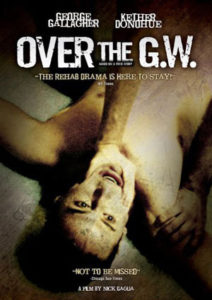
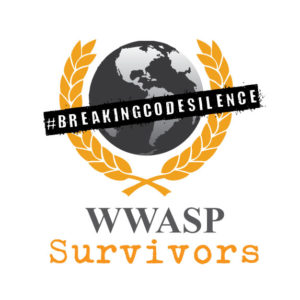
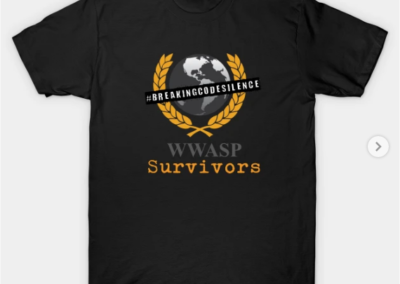
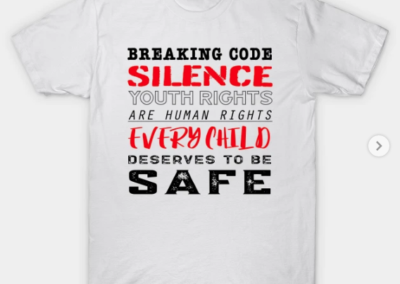
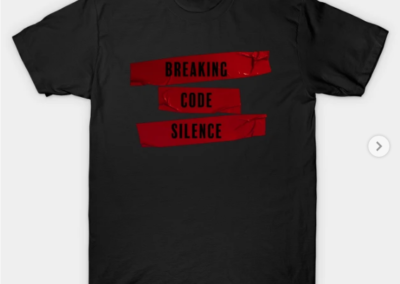
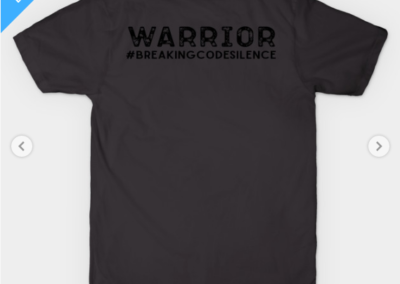
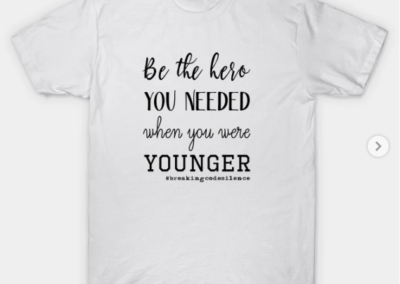
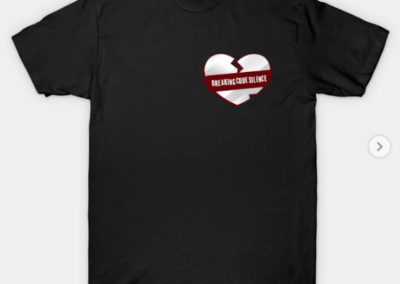
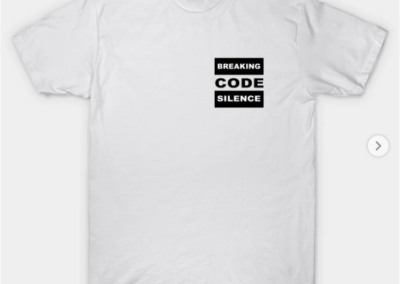
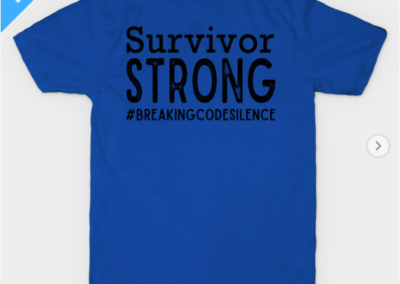
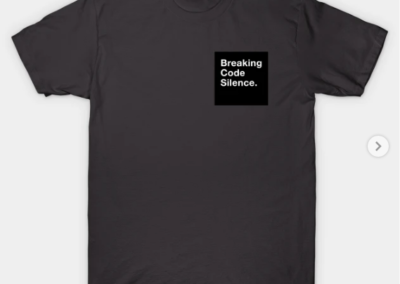
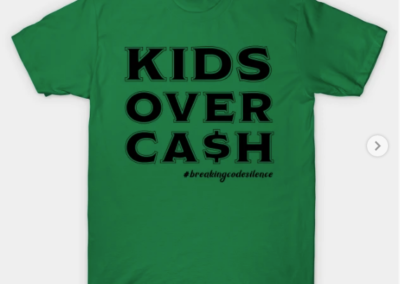
All this proof…all these years. And there are STILL these suspect places popping up. I can appreciate the person who felt the pain, actual survivors. Not some chumps that walk by you in OP and snicker as they WORKED THEIR PROGRAM. Then, all of the sudden lil Timmy has nightmares and he sees my face. These writings and posts should all be validated some how. True survivors, faced death. Now, how many of you little shits, really can own up to facing death?…not many, cause y’all were scared and sat there, watching the torture, not experiencing the actual torture. I question this website for being so broad and blatant. You should only permit actual survivors on here Billy. I know, make another website, so you can profit while this cancer proliferates.
Hello, my name is Cassius and I am a 9th grade student at Amy Biehl High School. I am emailing to inquire about interviewing you for my Social Action Project. For the project, I decided to focus on the Troubled Teen Industry and found your name while doing some research. One of the requirements of this project is to interview someone with expertise in our given topic. If you could spare a few minutes of your time to help me, I would be very grateful. I could make an appointment to call you, or I could even email you my questions. Please let me know if what would be convenient or if you know of someone else that I could contact. Our interview is due on May 13th but it would be best to complete it as soon as possible.
Thank you,
Cassius
Anyone else been harmed by the Marine Military Academy (MMA) Any cases against the prison? I was assaulted daily there.